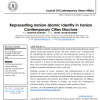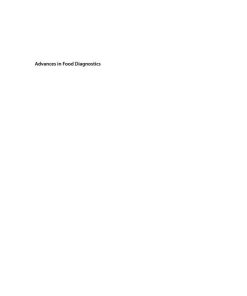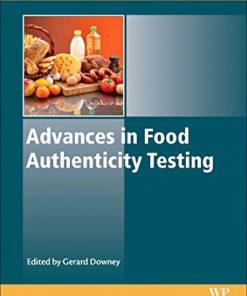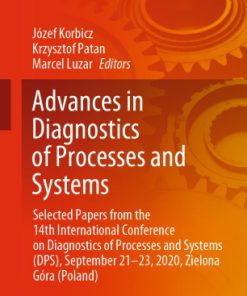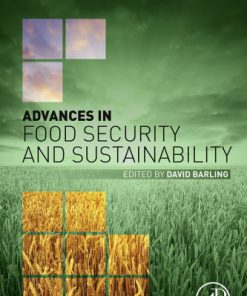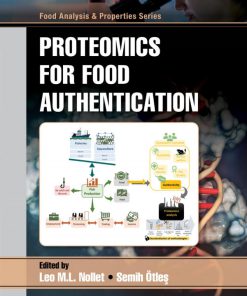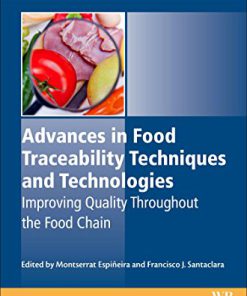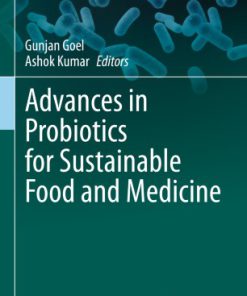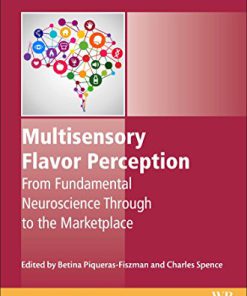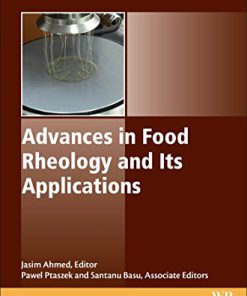Advances in food diagnostics 2nd edition by Fidel Toldr, Leo Nollet 1119105909 9781119105909
$50.00 Original price was: $50.00.$25.00Current price is: $25.00.
Advances in food diagnostics 2nd edition by Fidel Toldr, Leo M. L. Nollet – Ebook PDF Instant Download/DeliveryISBN: 1119105909, 9781119105909
Full download Advances in food diagnostics 2nd edition after payment.
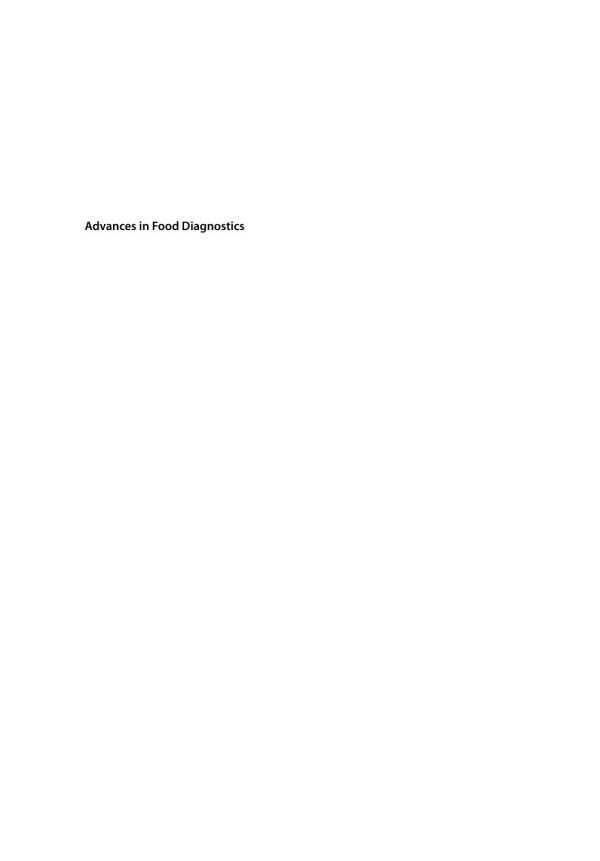
Product details:
ISBN-10 : 1119105909
ISBN-13 : 9781119105909
Author: Fidel Toldr, Leo M. L. Nollet
Still the most up-to-date, comprehensive, and authoritative book on food diagnostics available Featuring seven entirely new chapters, the second edition of this critically acclaimed guide has been extensively revised and updated. Once again delivering food professionals the latest advances in food diagnostics and analysis, the book approaches the topic in several different ways: reviewing novel technologies to evaluate fresh products; describing and analysing in depth specific modern diagnostics; providing analyses of data processing; and discussing global marketing, with insights into future trends. Written by an international team of experts, this volume not only covers most conventional lab-based analytical methods, but also focuses on leading-edge technologies which are being or are about to be introduced. Advances in Food Diagnostics, Second Edition: Covers ultrasound, RMN, chromatography, electronic noses, immunology, GMO detection and microbiological and molecular methodologies for rapid detection of pathogens Explores the principles and applications of immunodiagnostics in food safety and the use of molecular biology to detect and characterize foodborne pathogens Includes DNA-based and protein-based technologies to detect and identify genetically-modified food or food components Focuses on the translation of diagnostics tests from bench to the market in order to illustrate the benefits to the food industry Provides an overview of the business end of food diagnostics; identifying the markets, delineating the sellers and the buyers, comparing current technology with traditional methods, certifying operations and procedures, and analysing diagnostic devices within the food and related industries This is an indispensable resource for food scientists, food quality analysts, food microbiologists and food safety professionals. It also belongs on the reference shelves of labs conducting food diagnostics for the analysis of the sensory, quality and safety aspects of food.
Advances in food diagnostics 2nd table of contents:
Chapter 1: Assuring Safety and Quality along the Food Chain
1.1 Quality and safety: issues
1.2 Tracking and tracing through chains and networks
1.3 Food safety – the baseline
1.4 Food quality – delivery concepts
1.5 Quality programs – steps towards sector quality agreements
1.6 The information challenge
1.7 Conclusion
References
Chapter 2: Methodologies for Improved Quality Control Assessment of Food Products
2.1 Introduction
2.2 Use of FT-IR spectroscopy as a tool for the analysis of polysaccharide food additives
2.3 Use of outer product (OP) and orthogonal signal correction (OSC) PLS1 regressions in FT-IR spectroscopy for quantification purposes of complex food sample matrices
2.4 Screening and distinction of coffee brews based on headspace – solid phase microextraction combined with gas chromatography in tandem with principal component analysis (HS-SPME/GC-PCA)
2.5 Comprehensive two-dimensional gas chromatography (GC × GC) combined with time-of-flight mass spectrometry (ToFMS) as a powerful tool for food products analysis
2.6 Study of cork (from Quercus suber L.) – wine model interactions based on voltammetric multivariate analysis
2.7 Concluding remarks
References
Chapter 3: Developments in Electronic Noses for Quality and Safety Control
3.1 Introduction
3.2 Overview of classical techniques for food quality testing
3.3 Electronic Nose
3.4 Instrumentation of eNose (Loutfi et al., 2015)
3.5 Recent developments in electronic nose applications for food quality
3.6 Conclusion
References
Chapter 4: Proteomics and Peptidomics as Tools for Detection of Food Contamination by Bacteria
4.1 Introduction
4.2 Bacteria as food-borne pathogens
4.3 Gram-positive bacteria
4.4 Gram-negative bacteria
4.5 Bacterial toxins
4.6 Detection of bacterial contamination in food
4.7 Analysis of bacterial toxins
4.8 Conclusions
4.9 Acknowledgements
References
Chapter 5: Metabolomics in Assessment of Nutritional Status
5.1 Introduction
5.2 Usability of metabolomics in nutrition sciences
5.3 The metabolite complement in human studies
5.4 Metabolomics within the analysis of relationship between diet and health
5.5 Individual differences in metabolic and nutritional phenotype
5.6 Assessment of nutritional status, example studies
References
Chapter 6: Rapid Microbiological Methods in Food Diagnostics
6.1 Introduction
6.2 Quantitative vs qualitative
6.3 Culture dependent vs independent
6.4 Automation and multi-pathogen detection
6.5 Separation and concentration
6.6 Rapid methods that are currently in the market
6.7 Conclusion
References
Chapter 7: Molecular Technologies for the Detection and Characterisation of Food-Borne Pathogens
7.1 Introduction
7.2 Hybridisation-based methods
7.3 Nucleic acid amplification methods
7.4 Molecular characterisation methods
7.5 Conclusion
References
Chapter 8: DNA-based Detection of GM Ingredients
8.1 Introduction
8.2 Analysis of GMO
8.3 Quantification of GMOs
8.4 Validation
8.5 Challenges in GMO detection
8.6 Outlook
References
Chapter 9: Enzyme-based Sensors
9.1 Introduction to enzymatic biosensors
9.2 Types of transducers
9.3 Enzymatic biosensors and the food industry
9.4 Biosensors for the analysis of main food components
9.5 Biosensors for contaminants
9.6 Food freshness indicators, antinutrients and additives
9.7 Future perspectives
References
Chapter 10: Immunology-based Biosensors
10.1 Introduction
10.2 Antibodies and biosensors
10.3 Immunoassays for detection of microorganisms
10.4 Immunosensors and cancer biomarkers-immunoarrays
References
Chapter 11: Graphene and Carbon Nanotube-Based Biosensors for Food Analysis
11.1 Introduction
11.2 Biosensing devices based on graphene and CNTs and their applications in food analysis
11.3 Future trends and prospects
References
Chapter 12: Nanoparticles-Based Sensors
12.1 Introduction
12.2 Nanoparticles for sensor technology
12.3 Nanoparticles-based sensors: applications
12.4 Conclusions and future trends
References
Chapter 13: New Technologies for Nanoparticles Detection in Foods
13.1 Introduction
13.2 Nanoparticle properties and applications in food industry
13.3 Toxicity of food-related nanoparticles
13.4 Methods of nanoparticle detection in food
13.5 Conclusion
13.6 Acknowledgments
References
Chapter 14: Rapid Liquid Chromatographic Techniques for Detection of Key (Bio)chemical Markers
14.1 Introduction
14.2 The fundamentals of liquid chromatography
14.3 Advances in modern HPLC
14.4 Analysis of biochemical markers: applications for nutritional quality
14.5 Analysis of biochemical markers: applications for food quality
14.6 Analysis of biochemical markers: applications for the detection of food adulterations
14.7 Analysis of biochemical markers: applications for food safety
References
Chapter 15: Olfactometry Detection of Aroma Compounds
15.1 Introduction
15.2 Extraction of volatile compounds from foods for GC-olfactometry analysis (GC-O)
15.3 Olfactometry techniques
15.4 Applications of GC-O in food industry
15.5 Conclusions
15.6 Acknowledgements
References
Chapter 16: Data Handling
16.1 Introduction
16.2 Data collection
16.3 Data display
16.4 Process monitoring and quality control
16.5 Three-way PCA
16.6 Classification
16.7 Modelling
16.8 Calibration
16.9 Variable selection
16.10 Conclusion: future trends and the advantages and disadvantages of chemometrics
References
Chapter 17: Automated Sampling Procedures
17.1 Introduction
17.2 Extraction techniques for sample preparation
References
Chapter 18: The Market for Diagnostic Devices in the Food Industry
18.1 Introduction
18.2 Food diagnostics
18.3 Product composition
18.4 Product structure
18.5 Influence of processing on product composition
18.6 Processing parameters
18.7 Packaging parameters
18.8 Conclusion
People also search for Advances in food diagnostics 2nd:
advances in food science
advancements in food technology
advancements in food
biotechnology advances in food
bio-technological advancements in the food industry
Tags: Advances, food diagnostics, Fidel Toldr, Leo Nollet
You may also like…
Uncategorized
Advances in food diagnostics 2nd edition by Fidel Toldr, Leo Nollet 1119105909 9781119105909
Politics & Philosophy
Advances in food security and sustainability. Volume 1 First Edition Barling 9780128098646
Business & Economics - Industries
Proteomics for Food Authentication 1st Edition Leo M.L. Nollet (Editor)
Science (General)
Advances in Probiotics for Sustainable Food and Medicine Gunjan Goel
Science (General)
Advances in Food Rheology and its Applications 1st Edition Jasim Ahmed
Biology and other natural sciences - Plants: Agriculture and Forestry
Advances in Food Rheology and its Applications 1st Edition Jasim 008100432X 9780081004326


